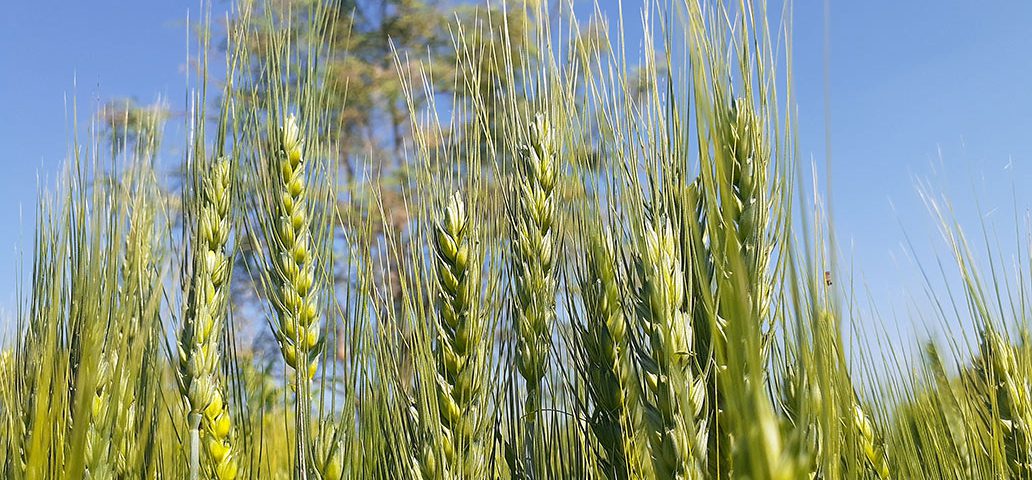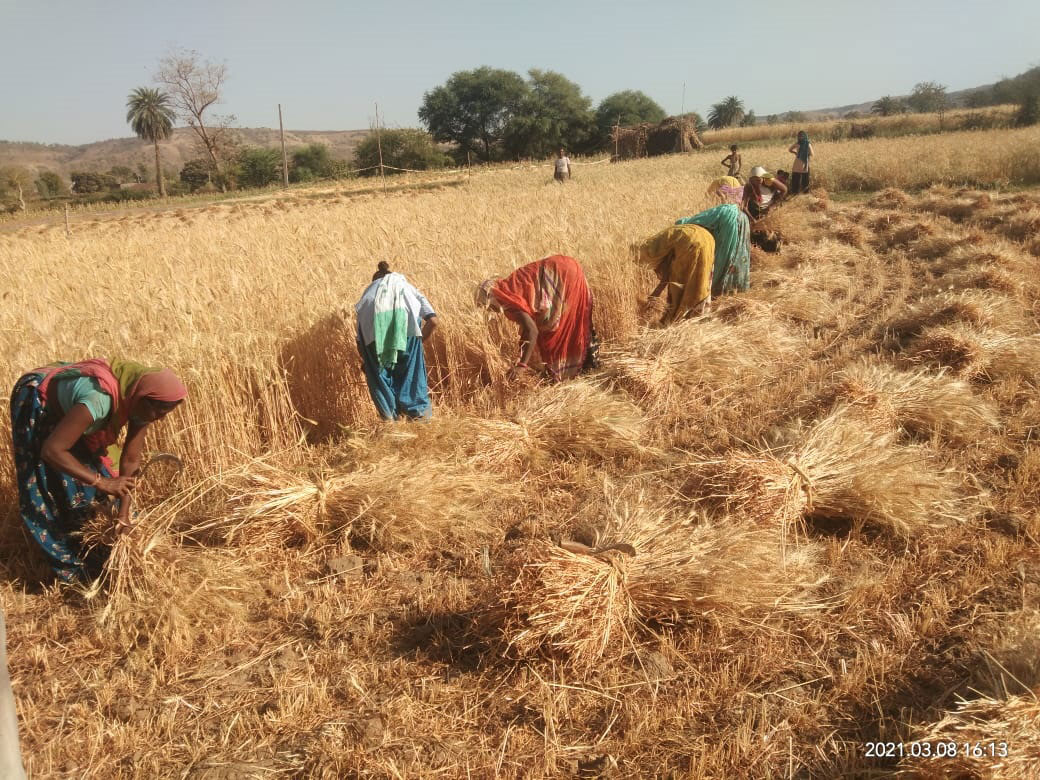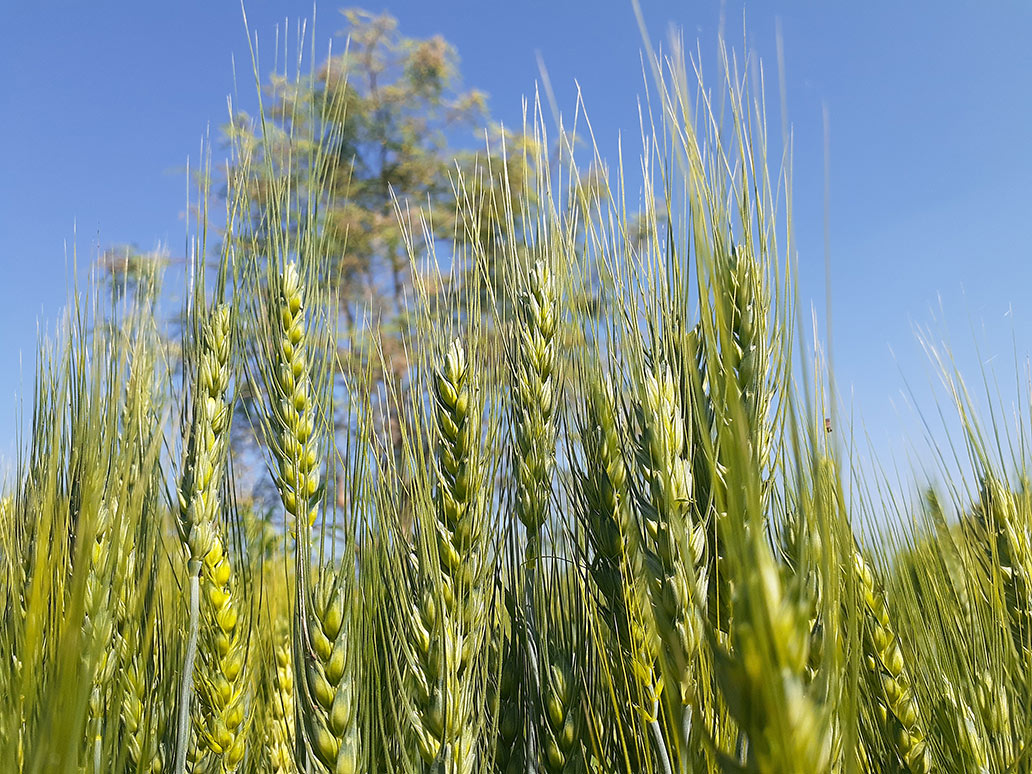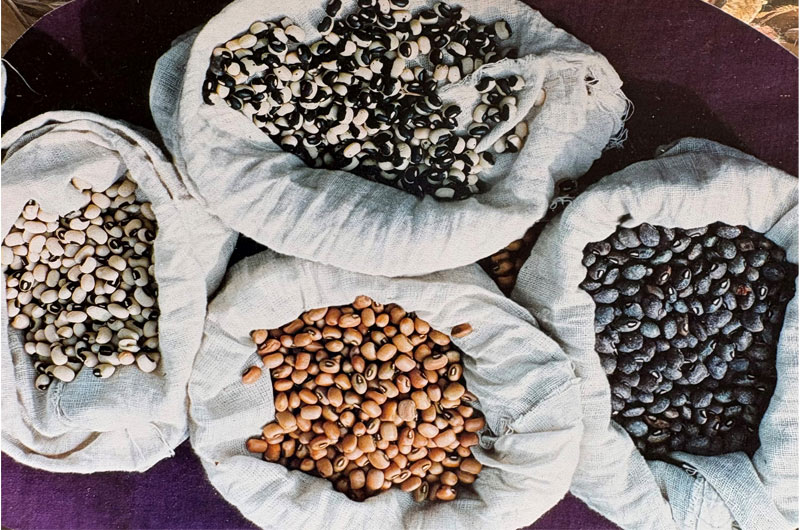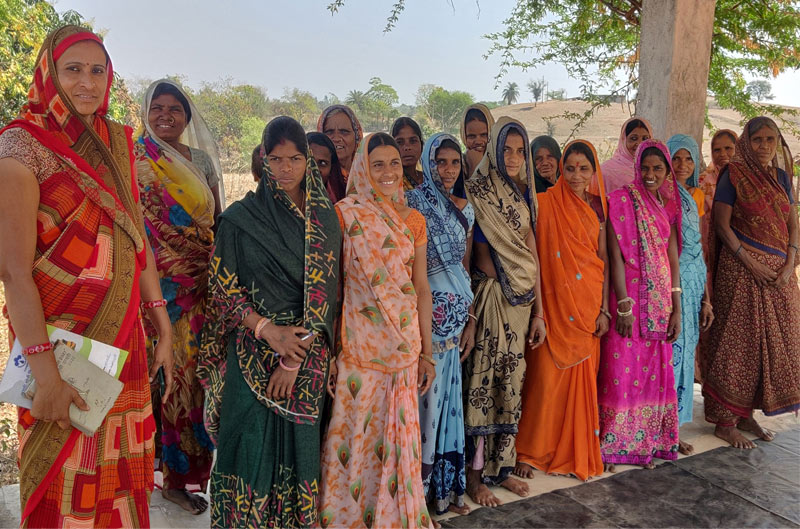Beej Swaraj- Standard procedure for traditional wheat cultivation

VAAGDHARA receives the ‘Gandhi Sadbhavna Sammaan’ Award
October 9, 2023
World Soil Day: “Soil and water are the sources of life”
November 30, 2023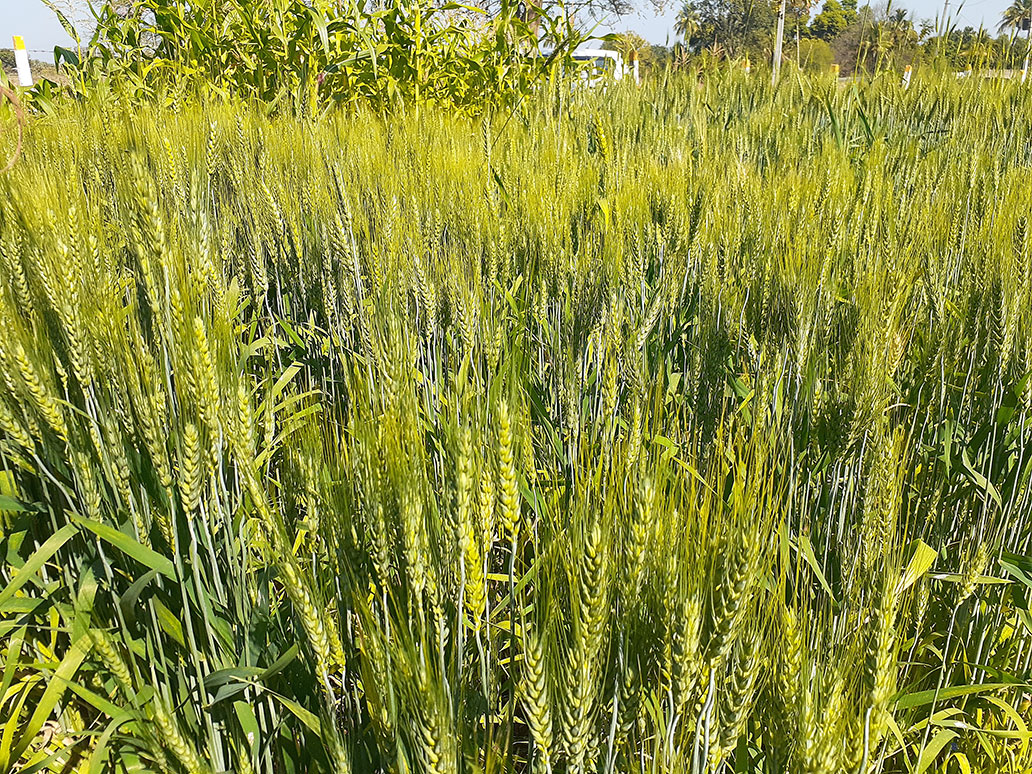 Background: Due to the natural climate (hot and dry) in the Triveni Sangam region in Madhya Pradesh, Gujarat and Rajasthan and the expansion of irrigation facilities in the region, the area under wheat cultivation is continuously increasing. The wheat produced here is characterised by shiny, spotless, and large grains. As a result, there are signs of increasing wheat cultivation in the Rabi season. However, due to market influence, farmers in our region are indiscriminately utilising chemical fertilisers and pesticides. On the one hand, this exposes the farmer to the risk of falling into debt, and on the other hand, the toxic production damages both his soil and his health. This article aims to show how traditional farming methods can be adopted to produce non-toxic, chemical-free and nutritious wheat.
Background: Due to the natural climate (hot and dry) in the Triveni Sangam region in Madhya Pradesh, Gujarat and Rajasthan and the expansion of irrigation facilities in the region, the area under wheat cultivation is continuously increasing. The wheat produced here is characterised by shiny, spotless, and large grains. As a result, there are signs of increasing wheat cultivation in the Rabi season. However, due to market influence, farmers in our region are indiscriminately utilising chemical fertilisers and pesticides. On the one hand, this exposes the farmer to the risk of falling into debt, and on the other hand, the toxic production damages both his soil and his health. This article aims to show how traditional farming methods can be adopted to produce non-toxic, chemical-free and nutritious wheat.
Traditional wheat cultivation - the following aspects should be observed.
- Soil: Loamy, sandy soils of medium to heavy quality with good drainage are best suited for growing wheat.
- Field preparation: In traditional wheat cultivation, 5 tons of mature cow dung per bigha are spread on the field 15 days before sowing. After spreading the cow dung, the field is ploughed thoroughly and leveled with a hoe. To make the cow dung rich in Trichoderma, 2.5 kg of Trichoderma powder should be mixed in 2 quintals of mature cow dung 10-15 days before sowing. The heap must be fully covered with jute sacking or straw. The prepared treated manure is applied to the field before the wheat is sown. This effectively prevents fungal and fungal diseases in the wheat.
- Seed treatment: Before sowing wheat seeds, the seeds should be treated with Rhizobium and PSB. It should be treated before cultivation as this provides relief from diseases affecting wheat crops and increases production.
- Treatment method: The seeds ought to be treated 3 to 5 hours before sowing. To do this, place one kilogram of seed in a clean container and moisten it with water. The water should contain 5 to 10 grams of PSB. Then add 5 to 10 grams of Azatobacter culture and apply a thin layer to the seeds using your hands. The seeds must be allowed to dry in the shade and sown immediately after drying in the evening or morning, as treated seeds should not be sown in strong sunlight.
- Seed quantity & sowing method: 15 to 20 kg of seeds are sufficient for a bigha field. Wheat should be sown about 7 to 10 cm deep in the soil to minimise the risk of seed-borne diseases. When sowing from row to row, a distance of 19 to 23 cm should be maintained between two rows.
- Weed management: To control weeds in wheat cultivation, it is advantageous to weed three times. The first weeding should take place after 20 to 25 days of sowing, the second after 40 to 45 days and the third after 60 to 65 days. Timely weeding helps to get rid of unwanted weeds and maintain good air circulation in the soil. By following the crop rotation regularly and carrying out field preparation and sowing on time, a farmer can eliminate many types of weeds.
- Irrigation management: To achieve a good wheat yield, the wheat must be watered at the right time. Irrigation is very important at the emergence stage of the crown roots and wheat ears. Failure to irrigate at this stage will have a negative effect on production. Normally, 4-5 irrigations are required for wheat cultivation. Four irrigations are sufficient for heavy soil and five irrigations for light soil.
Irrigation should be carried out by the farmer according to the following table:
|
Critical crop stages |
Days after sowing |
6 on the availability of irrigation |
4 on the availability of irrigation |
2 on the availability of irrigation |
1 on availability of irrigation |
|
Taproot formation stage |
18-21 |
first irrigation |
first irrigation |
first irrigation |
first irrigation |
|
Budding stage |
35-40 |
second irrigation |
second irrigation |
- |
- |
|
State of knot formation |
50-55 |
third irrigation |
- |
- |
- |
|
Hair growth stage |
65-70 |
fourth irrigation |
third irrigation |
- |
- |
|
Milky state |
80-85 |
fifth irrigation |
fourth irrigation |
second irrigation |
- |
|
Grain ripening stage |
90-95 |
sixth irrigation |
- |
- |
- |
- Diseases occurring in wheat
|
Termites: Termites can damage the wheat crop at any stage. The problem of termites is greater in rain-fed areas than in irrigated areas. The use of fully ripe cow dung also increases the possibility of termite infestation. |
Protection measures: « Crushing 1 kilogram of neem seed and scattering it on a Bigha field before sowing reduces termite infestation. « Adding a mixture of lime and Sulphur to the soil reduces termite infestation. « Applying wood ash to the roots of plant trunks also reduces termite infestation. « After harvesting the maize kernels, the remaining kernels are collected in a clay pot and placed in the field so that the mouth of the pot protrudes slightly from the ground. A cloth is tied over the opening of the pot, and it is filled with water. Within a few days, the pot will be filled with termites, which can then be destroyed. « Wrapping a betel nut-sized hinge in a cloth and storing it in a stone drain near the field also destroys termites. « Pouring burnt oil through the water drain intended for irrigation protects against termites. |
|
Armyworms: The caterpillar of this insect eats the plants, especially their sensitive parts, during the night and remains hidden during the day. They also damage leaves and ears. |
« To eliminate armyworms, 5 kg of neem leaves can be finely ground and boiled well in water. This solution is mixed with 100 liters of water and sprayed on the plants. « Spraying one liter of Dashaparni mixed with 10 liters of water also prevents the outbreak of armyworms. |
|
Brown wheat caterpillar, aphids: |
« Mixing a small amount of mustard or thistle seed with wheat and sowing it as an intercrop prevents infestation by brown wheat caterpillars and aphids. « A suspension can be made from 15 liters of cow urine and 15 kg of chopped neem leaves in 100 liters of water. The mixture must mature for seven days and can then be applied to one hectare. After seven days, the caterpillars and aphids of the brown wheat should be destroyed. |
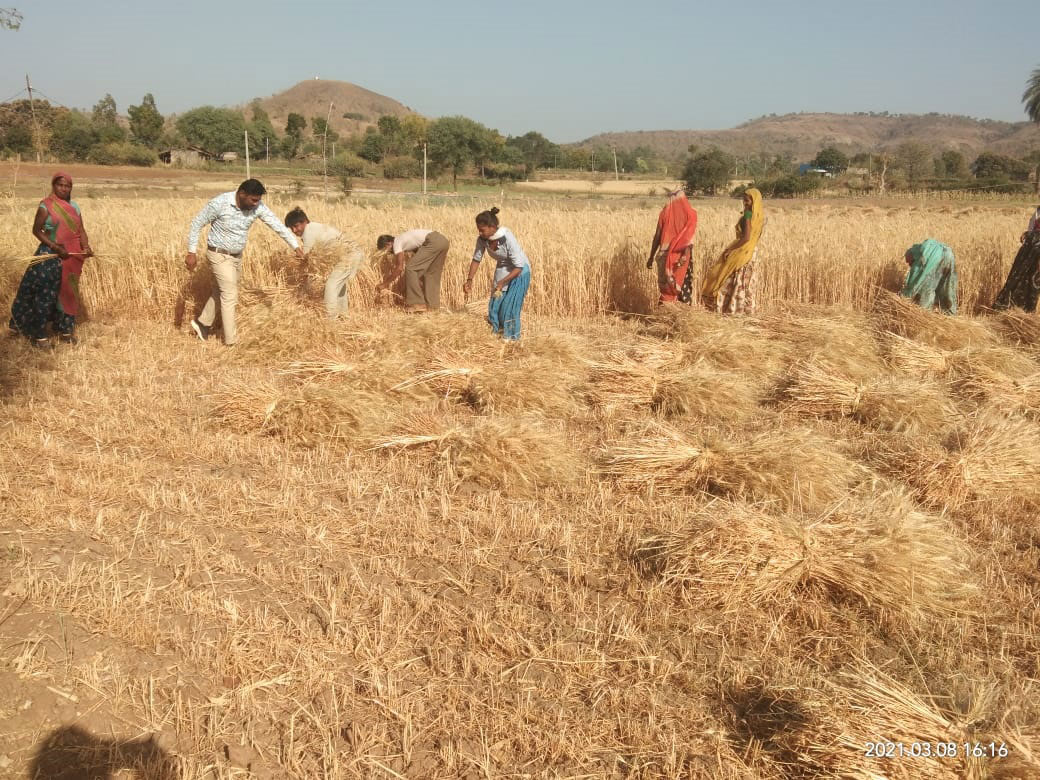 Harvesting: When the wheat grain is ripe or a cutting sound can be heard when the wheat grain is broken with the teeth, this means that the crop is ready for harvesting. After harvesting, the crop should be dried and then threshed. After threshing, the grains should be thoroughly dried before storage.
Harvesting: When the wheat grain is ripe or a cutting sound can be heard when the wheat grain is broken with the teeth, this means that the crop is ready for harvesting. After harvesting, the crop should be dried and then threshed. After threshing, the grains should be thoroughly dried before storage.- Wheat storage and protection against pests:
Wheat is often infested by weevils. To prevent this, we should pay attention to the following things, for example:
-
- Traditionally, wheat should be thoroughly cleaned and dried before storage, and the moisture content in the grain should not exceed 8 to 10 percent.
- Storing wheat grains mixed with ash or neem leaves also combats insect infestation.
- Production: 5 to 8 quintals are produced per bigha.
Subscribe to our newsletter!


